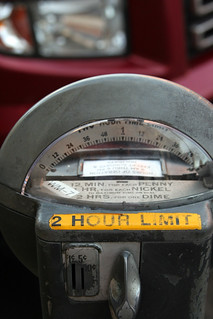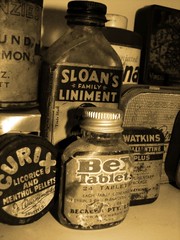My dentist is terrific at marketing. And I’m not entirely sure that he even fully realizes it. He’s a very smart guy and his marketing efforts are far from accidental, I’m just not sure that he has enough basis for comparison to realize how much better he is than the average schmo who hasn’t studied marketing.
Here are five things my dentist does that make him a marketing machine:
1. Testimonials
In his waiting room — which, incidentally, looks more like the lobby of a nice hotel than a typical doctor’s waiting room — he has a small digital picture frame on one of the oak tables. The frame changes images every five seconds or so. Every single image on the frame is a photo of an actual patient paired with a pull-quote from a testimonial that patient has given. He has dozens of these testimonials. Both the quotes and the photos are all top-notch.
2. Upsell
His staff is absolutely genius at the art of upselling. Dr. Rosen himself tends to stay above such things and is just the good old friendly doctor. He never sells a thing. But don’t be fooled into thinking he isn’t the puppet master pulling the strings on all his staff. They never go for the hard-sell. It’s always a “recommendation”. If you don’t buy, they leave it alone but their pitch is good enough that most patients buy.
3. Email
He uses an autoresponder to keep in touch with patients. I always get a reminder about two weeks before an appointment and a second just a few days prior. I also get a follow-up the day after an appointment inviting me to review and give feedback on the services I received during my visit.
The emails are beautifully formatted and very inviting.
4. Text Messaging
Social media is great but it’s a means for communicating to anonymous masses of people. Dr. Rosen augments his social media presence with direct one-on-one text messages. These are also of the autoresponder variety and mostly appointment reminders, but they’re highly effective. After all, if appointments are canceled or forgotten, he doesn’t make money so these reminders reduce the number of missed or canceled appointments and thus maximize his income.
5. Free Gift
On their first visit to his office, every new patient is given a very nice electric toothbrush. I have seen these in stores selling for around $35. Why would Dr. Rosen give away $35 toothbrushes when every other dentist in the world gives out cheap $1 toothbrushes with their name and number embossed on the handle? It’s all about making a lasting first impression. His services are not inexpensive. I just had my teeth cleaned and the bill came to $220. How many times do you think a patient needs to come back before he makes a profit? That’s right. Just once. If he can make such an impression that all or most of his patients come back for just one more service, he’s made a profit. If a large percentage of those patients are like me and become regulars for a long period of time, he makes a huge profit. Dr. Rosen knows the lifetime value of a patient so he knows exactly what he can afford to spend to attract a new one.
Wrap-up
Without great service, the best marketing in the world is just a revolving door. You might get customers in but they won’t stay and you’ll find yourself in a constant (and expensive) pursuit of new ones.
Dr. Rosen’s sweetest marketing trick of all is that he and his whole office provide excellent service. He has so many repeat customers that he doesn’t really have to go out and actively market for new ones.
Click any of the icons below to retweet these passages from the above article.
![]() 5 Sweet Marketing Tricks my Dentist Uses
5 Sweet Marketing Tricks my Dentist Uses
![]() My dentist is terrific at marketing.
My dentist is terrific at marketing.
![]() Here are five things my dentist does that make him a marketing machine.
Here are five things my dentist does that make him a marketing machine.
![]() He is the puppet master pulling the strings.
He is the puppet master pulling the strings.
![]() Social media is great but it’s a means for communicating to anonymous masses of people.
Social media is great but it’s a means for communicating to anonymous masses of people.
![]() Augment your social media presence with this personalized service.
Augment your social media presence with this personalized service.
![]() It’s all about making a lasting first impression.
It’s all about making a lasting first impression.
![]() How many times must a client return before you make a profit?
How many times must a client return before you make a profit?
![]() Without great service, the best marketing in the world is just a revolving door.
Without great service, the best marketing in the world is just a revolving door.

 Have you ever had a Naked drink?
Have you ever had a Naked drink?





